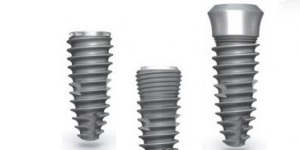
Important areas to clean Overdentures
2015-08-30
بررسی حرکت های مندیبل جهت ایمپلنت
2015-08-31After the abutment is placed, your gums must heal for one or two weeks before the artificial tooth can be attached. Once your gums heal, you’ll have more impressions made of your mouth and remaining teeth. These impressions are used to make the crown — your realistic-looking artificial tooth. The crown can’t be placed until your jawbone is strong enough to support use of the new tooth
You and your dental specialist can choose from two main types of artificial teeth
A removable implant prosthesis. This type is similar to a conventional removable denture. It contains artificial white teeth surrounded by pink plastic gum. It’s mounted on a metal frame that’s attached to the implant abutment, and it snaps securely into place. It can be easily removed for repair or daily cleaning. It’s often a good choice when several teeth in the lower jaw are replaced, mainly because it’s more affordable than multiple individual dental implants and yet more secure than a traditional denture
A fixed implant prosthesis. In this type, an artificial tooth is permanently screwed or cemented onto an individual implant abutment. You can’t remove the tooth for cleaning or during sleep. If affordability isn’t a concern, you can opt to replace several missing teeth this way. Each crown is attached to its own dental implant
After surgery
Whether you have dental implant surgery in one stage or multiple stages, you may experience some of the typical discomforts associated with any type of dental surgery, such as
Swelling of your gums and face
Bruising of your skin and gums
Pain at the implant site
Minor bleeding
If swelling, discomfort or any other problem gets worse in the days after surgery, contact your oral surgeon. You may need pain medications or antibiotics
After each stage of surgery, you may need to eat soft foods while the surgical site heals — as long as 10 to 14 days. Typically, your surgeon will use stitches that dissolve on their own. If your stitches aren’t self-dissolving, your doctor removes them in about 10 days






